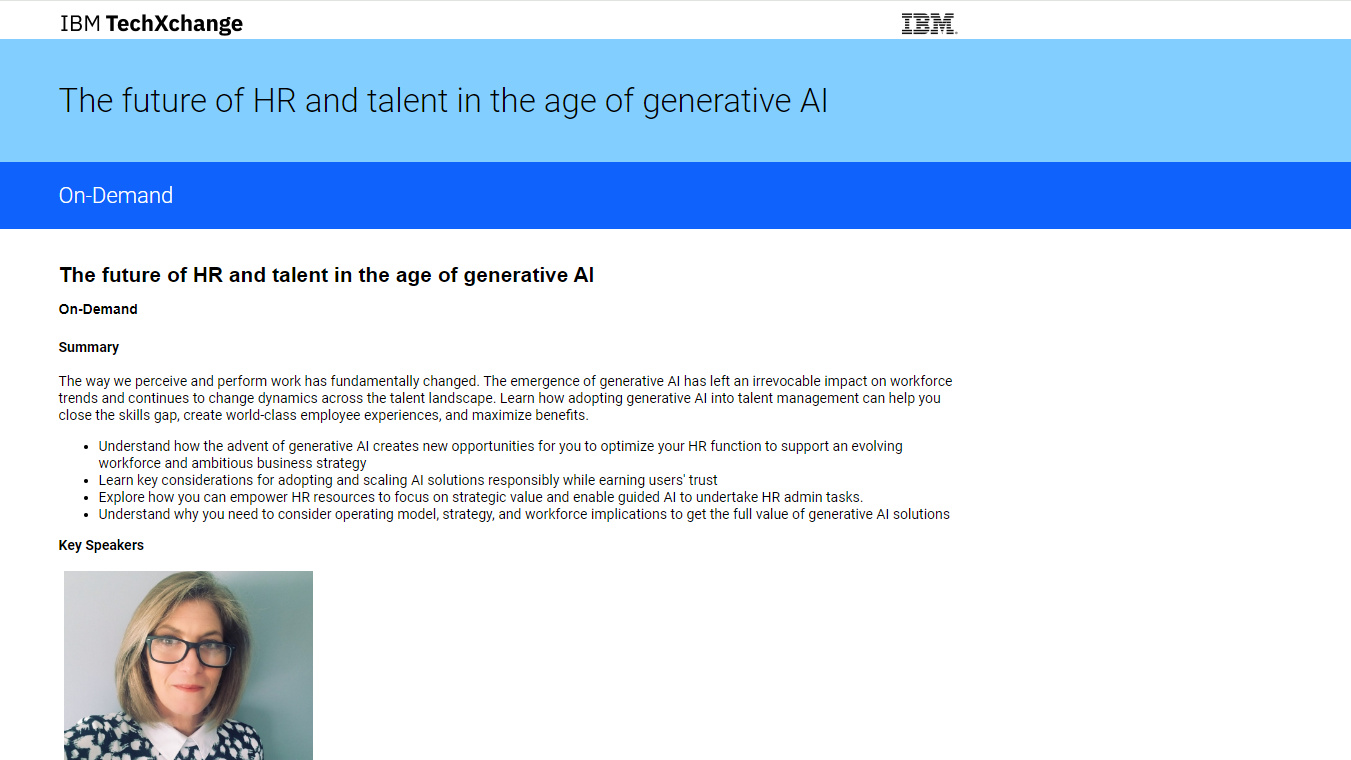A CIO's work is never done when it comes to digital transformation
To put an end date on a transformation project is to misunderstand the value of change


Digital transformation is one of the most commonly used buzz phrases in business technology. Everyone, from the CIOs who buy kit to the vendors who hawk it, uses the term as shorthand for explaining how organisations change their operational activities through the exploitation of new systems and services.
Unfortunately, this over-reliance on shorthand is creating problems. Digital transformation because of its over-use and under-definition has become a catch-all expression for any kind of IT-enabled business change programme. Rather than helping to explain the positive impact of technology, digital transformation has become a source of confusion.
It's a sentiment that chimes with Wincanton CIO Richard Gifford. As IT chief at the Chippenham-based logistics specialist, Gifford is helping the business develop a digital supply chain, which includes both in-house programmes and external partnerships with innovative start-ups. Despite his progress, Gifford is wary of digital transformation hype and he says the phrase must be only associated with those projects that help a business innovate and pivot.
"Those of us who have been in the industry for quite some time would probably say we've always been doing transformation," he says. "The differentiator for me would be if you're creating a new business model and using technology to do that. In the past generally, we've been looking at trying to make things more efficient or more effective. I think here we're looking at doing different things or enabling the business to do completely different things."
Careful definitions
This focus on change resonates with Chris Ashworth, CIO at delivery firm Hermes, who says technology is potentially the biggest differentiator in the logistics industry. Ashworth is helping his organisation exploit data through the cloud. While this work boosts operational activities and customer services, Ashworth is careful to define his business change programme in the right way and he advises other CIOs to take a similar stance.
"Every CIO will tell you their business is on a digital transformation journey," he says. "What matters is your interpretation and for us, we're trying to do the right things for our business. We're being backed to make the investment in technology. You can see the change and you can feel it happen."
Like Ashworth, Rob Howe, IT director at Guinness World Records, is perplexed by the proliferation of the digital transformation buzz phrase. More worryingly, he believes use of the shorthand masks an important practical reality. Digital transformation is often presented as a finite project, when it would be better presented as a constant work in progress.
Sign up today and you will receive a free copy of our Future Focus 2025 report - the leading guidance on AI, cybersecurity and other IT challenges as per 700+ senior executives
"Once a digital transformation initiative is complete, it isn't finished you can't simply close the door and walk off," says Howe. "Digital transformation is a continual, iterative process. The iterations might get smaller as you move forward, and you might go off in different directions, but you shouldn't be thinking in terms of a transformation project as being finished."
"Because if you think like that, you won't add the value in the longer term. You need to think instead that you've built the foundations and now you can focus on the next steps. It's about continuous evolution rather than a single digital transformation."
Howe is currently undertaking his own business change initiative at Guinness World Records, working with external technology partner Ensono to manage the migration of business systems to an Amazon Web Services (AWS) platform. The programme is helping the business evolve from a publisher to a creative consultancy that works alongside brands.
A continual process
Other digital leaders are on a similar journey. Worldwide spending on digital transformation technologies hardware, software, and services hit $1.3 trillion in 2017, according to IDC. The researcher expects spending to almost double between now and 2021, when the total amount spent on digitalisation globally will surpass $2.1 trillion.
Another technology leader who is leading a change programme is Darren Curry, chief digital officer (CDO) at NHS Business Services Authority (NHSBSA). Curry is transforming service provision at the organisation, which has spent the past 12 years scanning the nation's paper prescriptions. In 2017, NHSBSA processed 500 million prescriptions.
Curry is helping the organisation exploit its experience and break the dependence on paper in the health service. Using specially created software from CCube Solutions, the organisation plans to reconfigure its existing IBML ImageTrac5 scanners which currently scan about 20,000 prescriptions per hour so that they can handle a variety of documents, not just prescriptions.
This work is being managed in tandem with Alaris, IBML's UK service partner. Curry says the project will help build a platform for further change, effectively the start of a continual evolution process - the true meaning of digital transformation.
"Whereas our transformation programme was initially viewed as something with a clear end date, we've now pivoted and we recognise change is a continual process, where services must be maintained and improved on a continual basis," says Curry.
A CIO's work is never done
This redefining of digital transformation to a form of continual evolution will come as good news to many experts in the IT industry. Researcher Forrester surveyed 1,600 business and IT decision makers and found 21% of firms think their transformation is done and dusted, while another 22% are only investigating or not transforming at all.
Forrester argues that understanding change as a constant work in progress will help CIOs to stay much better prepared in the digital age. For Richard Corbridge, chief digital and information officer at Leeds Teaching Hospitals NHS Trust, continually improving delivery through technology-led change is fundamental to providing a modern service.
"Digital transformation is when the technology we use is an unobtrusive and essential element of the work that our colleagues do in terms of patient care. It's when our work is about delivering something for clinicians and that technology becomes the way they deliver healthcare to patients," he says.
Corbridge is running a series of technology-enabled projects at his organisation. He is leading an agile development function to deliver an electronic health record for the entire Trust and an integrated care record for the community of Leeds. The aim, says Corbridge, is to ensure technology helps deliver life-changing benefits now and in the future.
"I want to stop collecting information to count beans," he says. "We need to get to the point where the delivery of healthcare creates information that can be used from a clinical research point of view and for an audit of the healthcare system.
"That, for me, would represent successful digital transformation."

Mark Samuels is a freelance writer specializing in business and technology. For the past two decades, he has produced extensive work on subjects such as the adoption of technology by C-suite executives.
At ITPro, Mark has provided long-form content on C-suite strategy, particularly relating to chief information officers (CIOs), as well as digital transformation case studies, and explainers on cloud computing architecture.
Mark has written for publications including Computing, The Guardian, ZDNet, TechRepublic, Times Higher Education, and CIONET.
Before his career in journalism, Mark achieved a BA in geography and MSc in World Space Economy at the University of Birmingham, as well as a PhD in economic geography at the University of Sheffield.
-
 Trump's AI executive order could leave US in a 'regulatory vacuum'
Trump's AI executive order could leave US in a 'regulatory vacuum'News Citing a "patchwork of 50 different regulatory regimes" and "ideological bias", President Trump wants rules to be set at a federal level
-
 TPUs: Google's home advantage
TPUs: Google's home advantageITPro Podcast How does TPU v7 stack up against Nvidia's latest chips – and can Google scale AI using only its own supply?
-
 Alteryx names former Salesforce, Oracle strategist as new global technology alliances lead
Alteryx names former Salesforce, Oracle strategist as new global technology alliances leadNews The former Salesforce and Oracle leader will spearhead Alteryx’s partner strategy as the vendor targets deeper ecosystem collaboration
-
 "There is a pressing need to address 'technostress' head-on" – Knowledge workers stressed and anxious thanks to tech
"There is a pressing need to address 'technostress' head-on" – Knowledge workers stressed and anxious thanks to technews Notification overload and platform juggling leave many looking for a new job
-
 Essential skills for managers: Develop resilient employees
Essential skills for managers: Develop resilient employeesWhitepaper Build team culture, no matter where your people are located
-
 The GenAI transformation: Perspectives on leadership
The GenAI transformation: Perspectives on leadershipWhitepaper Guide employees through a generative AI transformation
-
 2024 Global learning & skills trends report
2024 Global learning & skills trends reportWhitepaper Top trends for the future of work
-
 Reimagining leadership development for today’s workforce
Reimagining leadership development for today’s workforceWhitepaper Top trends for the future of work
-
 A leader’s guide to battling workforce burnout
A leader’s guide to battling workforce burnoutWhitepaper Prevent burnout among your employees
-
 The future of HR and talent in the age of generative AI
The future of HR and talent in the age of generative AIWebinar Transform your people management, support your workforce, and optimize your HR strategy